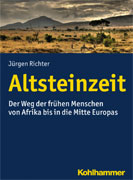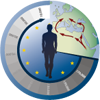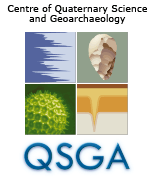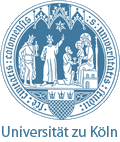Please visit the CRC 806 Database.
-
You are here:
- Home
- Publications
Kölner Studien zur Prähistorischen Archäologie 3

Yuri E. Demidenko & Thorsten Uthmeier (eds.) Kiik-Koba Grotto, Crimea (Ukraine).Re-Analysis of a Key Site of the Crimean Micoquian This book is an offshoot of the international Ukrainian-German research programme on "Functional variability in the Late Middle Palaeolithic of Crimea Peninsula, Ukraine" undertaken by the Crimean branch of the Ukrainian Academy of Science and the University of Cologne. It presents one of several complexes from earlier excavations now re-analysed for...
Kölner Studien zur Prähistorischen Archäologie 2

Jürgen Richter (ed.) Rietberg und Salzkotten-Thüle.Anfang und Ende der Federmessergruppen in Westfalen With contributions by Johanna A. A. Bos, Stephan M. Heidenreich, Alexandra Hilgers, Arie J. Kalis, Dirk Leder, Andreas Maier, Jutta Meurers-Balke, Jürgen Richter, Katsuhiro Sano and Burghart Schmidt The sites of Rietberg in a bend of the River Ems and Salzkotten-Thüle west of Paderborn represent the earliest and latest phases of the Federmesser Culture (Azilian) in Westphalia. Rietberg...
Kölner Studien zur Prähistorischen Archäologie 4

Thomas C. Hauck The Mousterian Sequence of Hummal (Syria) A sequence of more than 60 Palaeolithic cultural layers makes the site of Hummal in the arid steppe region of El Kowm (Central Syria), that has been investigated since 2002, a very important site. Since about one million years ago, humans repeatedly occupied the area of the spring and the later walk-in-well during a range of environmental conditions. This study deals...
Universitätsforschungen zur Prähistorischen Archäologie 239

Shumon T. Hussain Versuch einer Evolutionären Anthropologie der Empathie What does it mean to be human? This key question forms the starting point of the present work. How can the specific evolutionary pathway which led to the genesis of modern humans be differentiated from other trajectories, especially those which led to the extinction of our evolutionary relatives such as Neanderthals? The hallmark of the unique capability of social cognition is...
Universitätsforschungen zur Prähistorischen Archäologie 250

Valéry Sitlivy, Aleksandra Zięba, Krzysztof Sobczyk and Alexandr Kolesnik The Middle-to-Upper Palaeolithic Księcia Józefa open-air Site (Krakow, Poland): Lithic Technology and Spatial Distribution The Ksieza Josefa open-air site in Krakow illustrates the time of the latest Middle Palaeolithic and the Earliest Upper Palaeolithic around 40,000 years ago in Southern Poland.
Universitätsforschungen zur Prähistorischen Archäologie 219

Katsuhiro Sano Functional Variability in the Late Upper Palaeolithic of North-Western Europe – A Traceological Approach The study presents use wear analyses of lithic artefacts from some Magdalenian sites in Western Europe which might have belonged to one and the same regional Magdalenian group, regularly migrating between the Meuse and the Middle Rhine river valleys. The author, Katsuhiro Sano, makes visible a regional pattern which must have played an important...
Quaternary International 274, 2012

Jürgen Richter, Martin Melles and Frank Schäbitz (eds.) Temporal and spatial corridors of Homo sapiens sapiens population dynamics during the Late Pleistocene and Early Holocene This special issue published by "Quaternary International" presents first results of the CRC 806 (Our Way to Europe). Aim of the CRC funded since July 2009 by the Deutsche Forschungsgemeinschaft is to capture the complex nature of chronology, regional structure, climatic, environmental and socio-cultural contexts...
Universitätsforschungen zur Prähistorischen Archäologie 255

Dirk Leder Technological and Typological Change at the Middle to Upper Palaeolithic Boundary in Lebanon Since 2009 the Collaborative Research Centre (CRC 806) "Our Way to Europe – Culture-Environment Interaction and human Mobility in the Late Quaternary" has investigated the origin and dispersal of early modern humans from Africa to Eurasia.
Kölner Studien zur Prähistorischen Archäologie 5

Daniel Schyle & Jürgen Richter (eds.) Pleistocene Archaeology of the Petra Area in Jordan With contributions by Manuel Bertrams, Thomas C. Hauck, Shumon T. Hussain, Karin Kindermann, Jürgen Richter, Daniel Schyle and Thomas Wolter Since 2009, annual field campaigns led a multidisciplinary “CRC 806” team from Cologne and Aachen to the Wadi Sabra, south of the Nabataean capital of Petra in the Kingdom of Jordan.
Kölner Studien zur Prähistorischen Archäologie 6

Inga Kretschmer Demographic studies on population density, mobility and land use patterns in the late Upper Palaeolithic The late Upper Palaeolithic saw one of the gravest demographic upheavals of the last glacial: the re-occupation of Central Europe by the Magdalenian.
Kölner Studien zur Prähistorischen Archäologie 7

Lee Clare Culture Change and Continuity in the Eastern Mediterranean during Rapid Climate Change Assessing the vulnerability of Late Neolithic communities to a ‘Little Ice Age’ in the seventh millennium calBC.In this study, the author has collected an extensive pool of data in order to get a better understanding of social and biophysical causes and consequences resulting from so-called Rapid Climate Change and impacting on Neolithic populations.
Quaternary International 485, 2018

Karin Kindermann, Martin Kehl, Thomas Hauck and Nicole Klasen (eds.) Inside – Outside: Integrating Cave and Open-Air Archives This special issue of Quaternary International includes 14 papers presented on the international science meeting “Inside – Outside: Integrating Cave and Open-Air Archives”, which took place from the 6th to the 9th of April 2016 at the University of Cologne. The aim of this meeting was to bring experts from different fields...
W. Kohlhammer GmbH
Buchverlag
 Jürgen Richter
Jürgen Richter
Altsteinzeit -
Der Weg der frühen Menschen von Afrika bis in die Mitte Europas
Der Mensch hat seit seiner Entstehung und Entwicklung in Afrika einen langen Weg nach Mitteleuropa hinter sich: Er wanderte mehrmals von Afrika nach Eurasien, überlebte Wärmephasen und Kaltzeiten, breitete sich über einen Großteil der bewohnbaren Welt aus und wurde erst vor kurzer Zeit, um 10 000 v. Chr., sesshaft.







